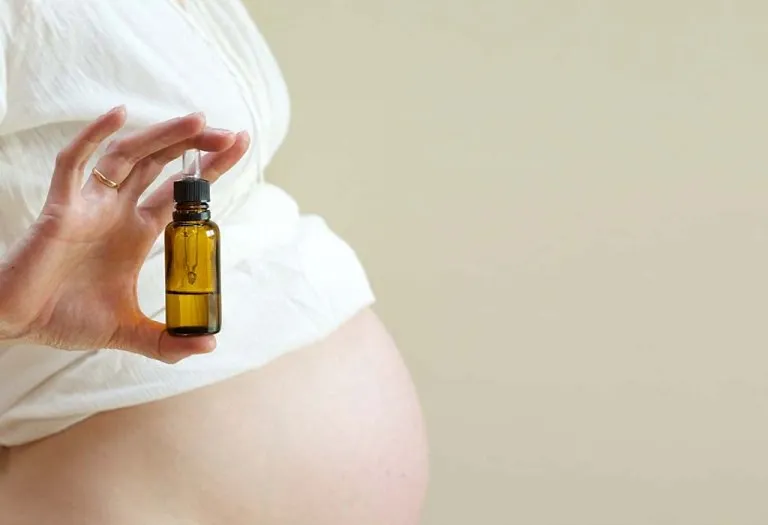Transition Phase of Labor – Signs and Ways To Deal With It
Embarking on the journey of childbirth is a profound and transformative experience for expectant mothers. The transition phase of labour, often regarded as one of the most intense parts of childbirth, marks a significant turning point in this journey. This phase, typically the final stage before the arrival of your little one, can be both physically and emotionally challenging. Understanding its signs and learning effective coping methods is crucial for a more positive and empowered birthing experience. In this article, we will delve into the depths of the transition phase, offering insights, guidance, and compassionate support to help you navigate this pivotal time with confidence and grace.
What Is Transition in Labour?
The transition phase of labour is a critical, intense stage in childbirth, marking the final stretch of the first stage. It involves the cervix dilating from 7 to 10 cm, preparing the body for delivery. This phase is known for its powerful, frequent contractions, which are often challenging for the expectant mother both physically and emotionally (1).
Why Is This Phase of Labour Challenging?
Transitional labour, the phase just before childbirth, is often considered the most challenging part of the labour process. This phase is particularly demanding due to its intense physical and emotional aspects. Physically, the contractions during transitional labour are the most powerful and closest together, occurring typically every two to three minutes and lasting up to 90 seconds each (2). These contractions are more frequent, prolonged, and more intense, leading to significant discomfort and pain.
Emotionally, this phase can be overwhelming for many women. The sheer intensity of the contractions, combined with fatigue from the earlier stages of labour, can lead to feelings of anxiety and irritability. This emotional rollercoaster is a natural response to the physical strain and the anticipation of the impending birth.
Moreover, transitional labour marks a critical point where the body undergoes significant changes to allow for the baby’s passage. This rapid progression can be daunting as the body and mind struggle to keep pace with these changes.
Signs of Transition in Labour
As an expectant mother approaches the transition phase of labour, certain signs become evident. These emotional and physical signs signal that the body is preparing for the final stage of childbirth.
Emotional Signs
During the transition phase of labour, several emotional signs can manifest, reflecting the intense nature of this stage:
- Overwhelming Feelings: Women often feel overwhelmed by the intensity of the contractions and the imminent arrival of their baby.
- Irritability and Mood Swings: The physical strain can lead to irritability and sudden mood changes.
- Anxiety and Fear: Feelings of anxiety or fear about the birthing process and the baby’s well-being are common.
- Doubt and Uncertainty: Some women may express doubt about their ability to continue or cope with the pain.
- Intense Focus: A heightened focus on contractions and the labour process, sometimes blocking out external stimuli.
- Emotional Release: Crying or expressing emotions more freely as a release of tension and anticipation.
Physical Signs
Several key physical signs also mark the transition phase:
- Stronger, More Frequent Contractions: Contractions are typically at their peak frequency, duration, and intensity.
- Increased Discomfort and Pain: The intensity of contractions can lead to significant discomfort or pain, often described as the most challenging part of labour.
- Nausea and Vomiting: Many women experience nausea or even vomiting during this stage.
- Shaking or Trembling: A physical response to intense contractions and hormonal changes can cause shaking or trembling.
- Pressure in the Lower Back and Pelvis: As the baby descends, pressure in the lower back and pelvic area increases (5).
- Urge to Push: A natural urge to push, although it might be advised to wait until full dilation (6).
- Changes in Breathing Pattern: Breathing can become more rapid or shallow due to the intensity of contractions.
How Long Does Transition Labour Last?
Transition labour, while being the most intense part of childbirth, is typically also the shortest. The duration of this phase can vary significantly among different women and even from one pregnancy to another for the same woman. On average, transition labour lasts anywhere from 15 minutes to several hours (3).
This phase may take longer for first-time mothers, often lasting up to three hours. However, for women who have given birth previously, the duration of transition labour can be significantly shorter, sometimes lasting only a few minutes. It’s important to remember that these time frames are approximate and can differ widely based on individual circumstances and the unique progression of each labour.
How You Can Deal With Transition Labour?
Managing the transition stage of labour effectively can significantly impact your childbirth experience. Here are several strategies to cope with the intense transition labour contractions and the emotional challenges of this phase:
1. Breathing Techniques
Deep, controlled breathing can help manage the pain of transition labour contractions. Focusing on your breath distracts you from the discomfort and helps you maintain a sense of calm (7).
2. Movement and Positioning
Changing positions or moving around can alleviate some discomfort. Whether it’s walking, swaying, or rocking, movement can be a powerful tool in dealing with the intensity of contractions.
3. Utilise Support
A supportive partner, doula, or healthcare provider can provide immense emotional and physical support. They can offer words of encouragement and physical assistance and help you stay focused and calm.
4. Visualisation and Relaxation
Visualising a peaceful scene or imagining the process of meeting your baby can be soothing. Relaxation techniques such as meditation or calming music can also be beneficial.
5. Hydrotherapy
Whether in a shower or a birthing pool, water use can provide significant pain relief. The warmth and buoyancy of the water can be soothing and help ease the intensity of the contractions (4).
6. Acceptance and Mindset
Embracing the process and understanding that each contraction brings you closer to meeting your baby can be empowering. A positive mindset can significantly impact your ability to cope with the demands of the transition stage of labour.
What Should Your Partner Do During Transition Phase of Labour?
A partner’s role becomes crucial during the transition phase of labour. Expectant mothers require immense support, both emotionally and physically. A partner’s understanding, patience, and proactive involvement can significantly ease the intensity of this phase, making the experience more manageable and comforting for the mother (9).
1. Provide Emotional Support
Continuous emotional support through encouraging words and a calm presence can greatly reassure the mother (8).
2. Assist With Comfort Measures
Help with comfort measures like massage, applying heat or cold packs, or helping the mother maintain her preferred labour positions.
3. Advocate for Her Needs
Communicate with healthcare providers to ensure the mother’s preferences and needs are respected and met during labour.
4. Maintain a Calm Environment
Keeping the environment calm, whether by controlling the lighting, playing soothing music, or managing visitors, can help maintain a peaceful space for labour.
5. Help With Breathing Techniques
Guide or remind the mother about breathing techniques, which can be crucial in managing pain and anxiety during intense contractions.
6. Offer Physical Support
Provide physical support during contractions, such as holding her hand, supporting her in different positions, or applying back pressure.
7. Stay Patient and Positive
Patience and a positive attitude, especially when the mother is overwhelmed, can be incredibly beneficial.
FAQs
1. Why is the transitional phase painful?
The transitional phase is painful due to intense contractions for rapid cervical dilation and the baby’s movement into the birth canal, coupled with physical and emotional exhaustion.
2. What are the stages of labour transition?
The stages of labour transition include the cervix dilating from 7 to 10 cm and contractions reaching their peak intensity, frequency, and duration.
Though challenging, the transition phase of labour is a pivotal part of the childbirth process. Embracing this journey with knowledge, support, and a positive mindset paves the way for a rewarding and memorable birthing experience.
References/Resources:
1. The stages of labour; Tommy’s; https://www.tommys.org/pregnancy-information/giving-birth/stages-labour
2. Overview of Labor; Stanford Medicine Children’s Health; https://www.stanfordchildrens.org/en/topic/default?id=overview-of-labor-90-P02896
3. Stages of labor; March of Dimes; https://www.marchofdimes.org/find-support/topics/birth/stages-labor
4. Stages of labour; The Women’s; https://www.thewomens.org.au/health-information/pregnancy-and-birth/labour-birth/stages-of-labour
5. Giving birth – first stage of labour; Pregnancy, Birth and Baby; https://www.pregnancybirthbaby.org.au/giving-birth-first-stage-of-labour#transition
6. The Stages of Labor and Ways to Cope; Texas Health Resources; https://www.texashealth.org/areyouawellbeing/Womens-Health/The-Stages-of-Labor-and-Ways-to-Cope; March 2022
7. Dealing With Pain During Childbirth; Nemours KidsHealth; https://kidshealth.org/en/parents/childbirth-pain.html
8. Tips for Your Labor Partner; Sutter Health; https://www.sutterhealth.org/health/labor-delivery/labor-stages-suggestions
9. Hoffmann. L, Hilger. N, Riolino. E, Lenz. A, Banse. R; Partner support and relationship quality as potential resources for childbirth and the transition to parenthood; PubMed Central; https://www.ncbi.nlm.nih.gov/pmc/articles/PMC10261844/
Also Read:
How to Reduce Labour Pains
Labour During Second Pregnancy
Stages of Labour During a Vaginal Childbirth
Was This Article Helpful?
Parenting is a huge responsibility, for you as a caregiver, but also for us as a parenting content platform. We understand that and take our responsibility of creating credible content seriously. FirstCry Parenting articles are written and published only after extensive research using factually sound references to deliver quality content that is accurate, validated by experts, and completely reliable. To understand how we go about creating content that is credible, read our editorial policy here.























